ASICS Trabuco Max 2 Review: Hitting New Stack Heights on the Trails in Spain
 Karen Parnell
October 19, 2023
Karen Parnell
October 19, 2023
ASICS Trabuco Max 2 Review: Hitting New Stack Heights on the Trails in Spain
ASICs has taking trail running stack height foam to those usually seen on super shoes! How does so much foam and bounce back perform on the mountain trails in Spain?
I live 750 metres (2490 feet) up a mountain in Southern Spain so when I go out for a run, I will hit a hill or two. In fact, I can do a 10km run and see my house pretty much all of the way round – which still freaks me out! I have the option to end with an uphill or start by going uphill to the top of my mountain and finish with a steep downhill – either way you know it will be tough.
A while back I reviewed the original ASICS Trabuco Max trail running shoe for TRI247 and I soon become my favourite running shoe – on and off trails. When the ASICS Trabuco Max 2 came out with a heel stack height of a phenomenal 43mm (that’s a lot of foam) I had to buy a pair and try them. Where that as good as my favourite original Trabuco’s?
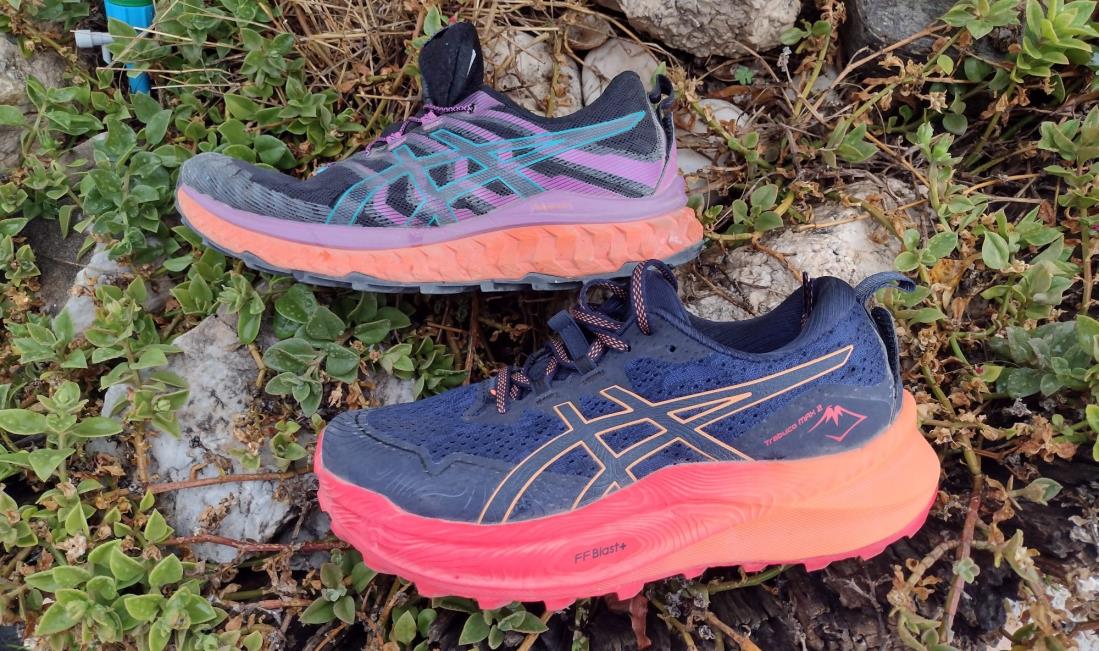
The new ASICS Trabuco Max 2 with enhanced stack height versus the original Trabuco Max shoe
Get your FREE Guide to Running Speed and Technique
First impressions of the Trabuco Max 2
When I first go the shoes out of the box, I was slightly disappointed as they have removed the lock laces with storage pouch and replaced it with standard laces and an elastic smart lace loop to keep your tied laces tamed. After my first trail run I can see why they have done this as it does give a firmer fit around the top of your foot which is good for downhill running.
The next thing that struck me was the foam – so much foam! When I first put them on it felt like I was walking on small mattresses and a bit strange. I soon got used to this feeling and out on the rocky trails it absorbed the bumps well and it felt like my knees took less stress. The bounce back was even more pronounced than my other first gen Trabuco’s which I love.
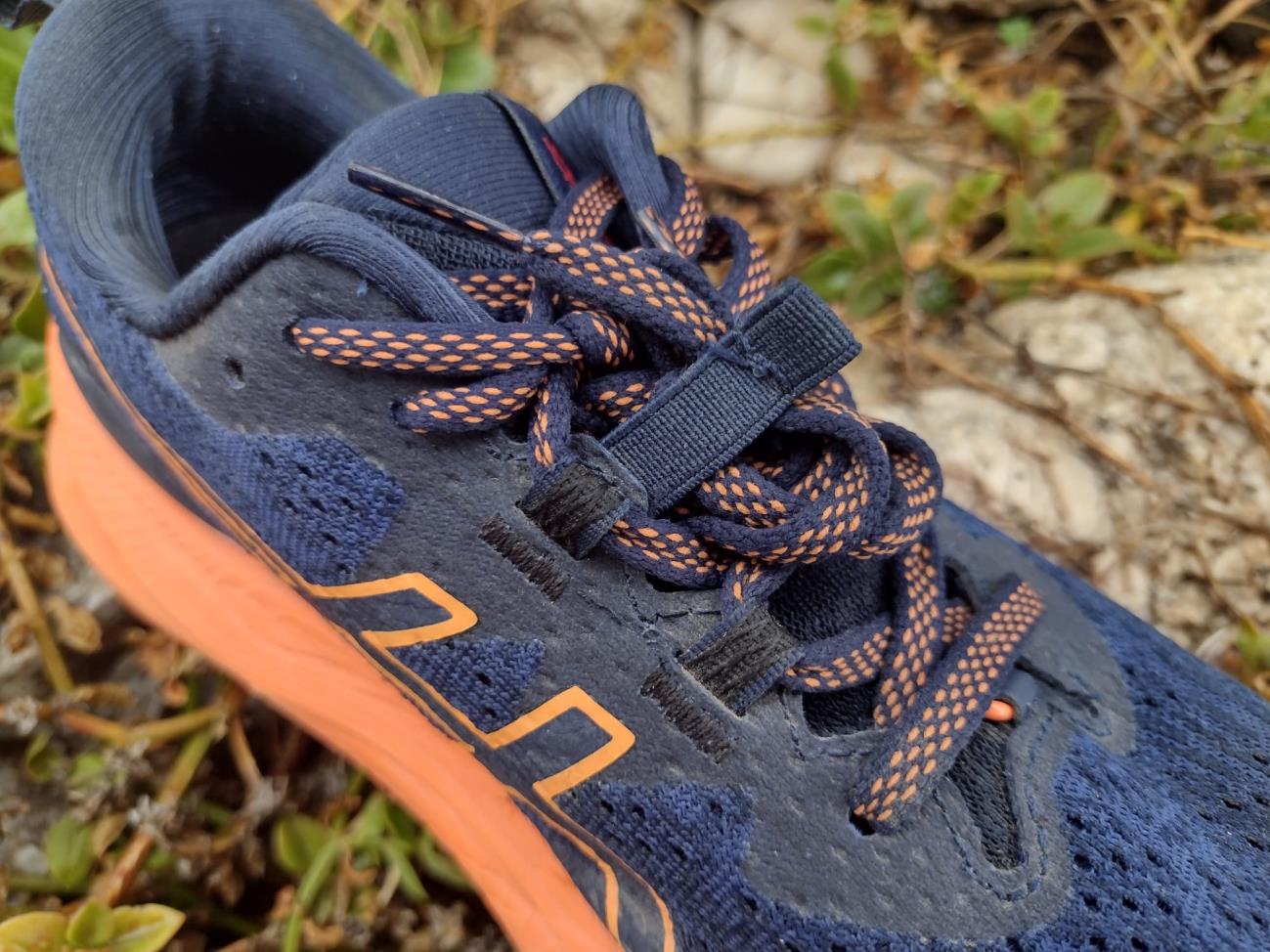
The ASICS Trabuco Max 2 with elastic smart lace loop to tame your laces when running
Get your FREE Guide to Running Speed and Technique
The Trabuco Max 2 has kept the front hook and Velcro pouch at the back for securing gaiters. I won’t see much use for this out here so I will try to get up to the Sierra Nevada mountains and run in the snow this year to try this feature out.
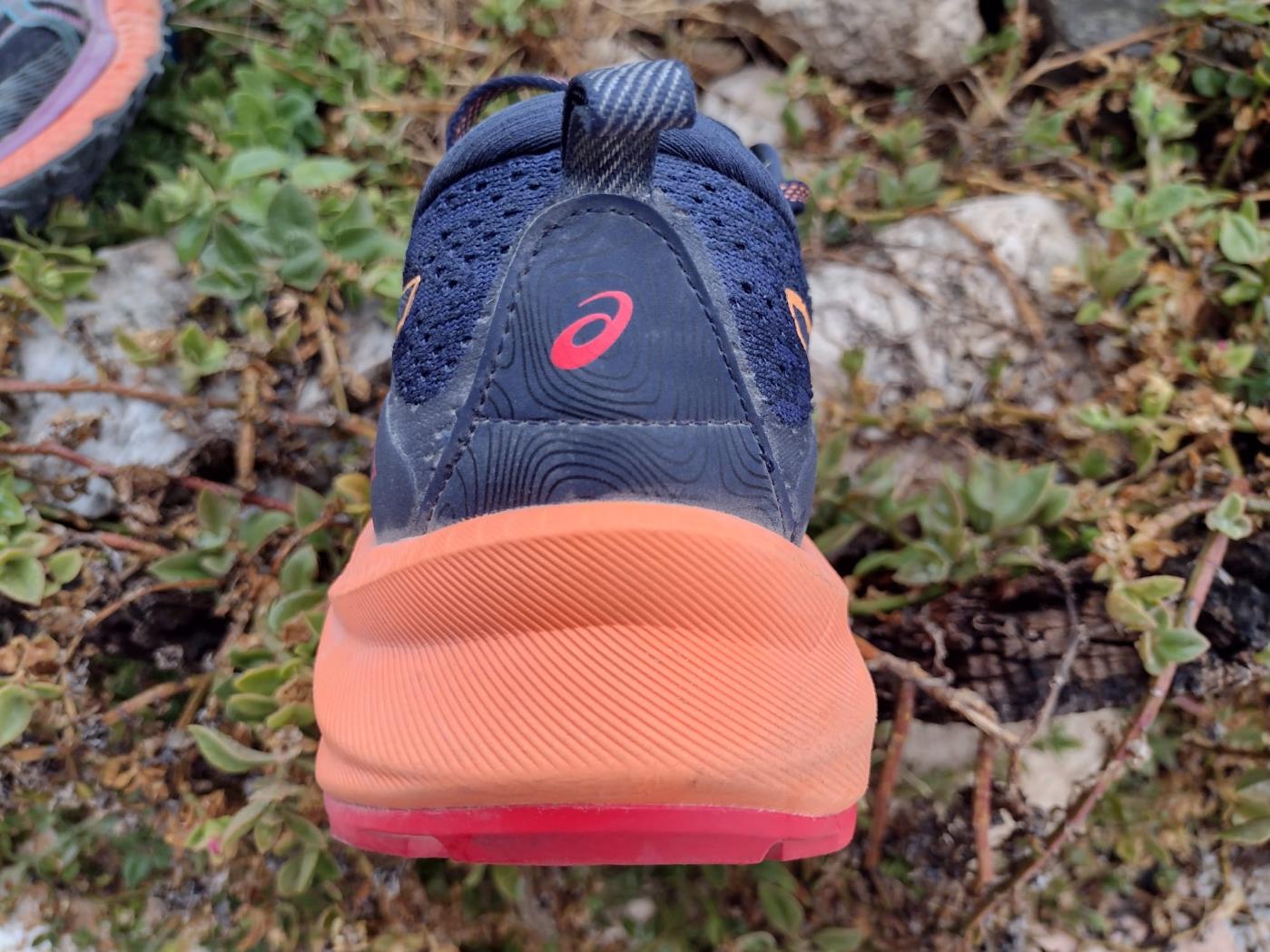
ASICS Trabuco Max 2 gaiter flap with Velcro for running in the rain and snow - just add a water proof gaiter
Get your FREE Guide to Running Speed and Technique
They state that they are a neutral shoe so ideal for me as I wear orthotics. Like the original Trabuco’s I did not put my orthotics in and after quite a few kilometres of running they are not necessary as they have sufficient arch support for me.
The Sole Gave Me Confidence
This has to be the best part, the sticky sole. Maybe it was because it was 30 degrees outside, but I found the soles really “sticky”. This was excellent on the downhill parts, and I ran on a route I take every week and I found I was able to run down even on the steepest parts with new confidence. I think I may be in love with my new shoes!
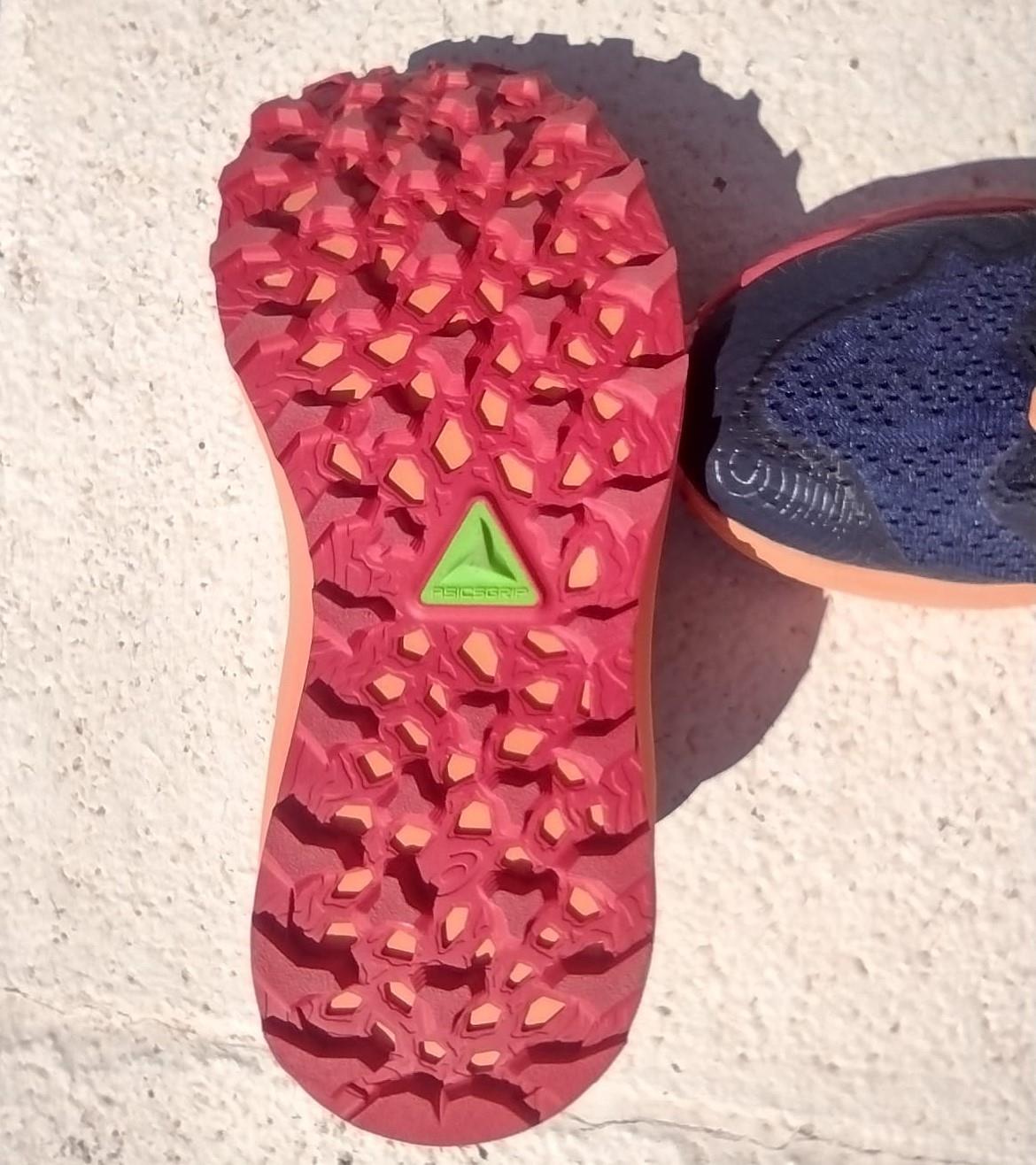
The ASICS Trabuco Max 2 sticky sole
Get your FREE Guide to Running Speed and Technique
Designed with the Environment in Mind
At least 50% of its primary upper consists of recycled materials. Asics have also used less water and carbon emissions to produce the shoe’s sock liner. Better for you, better for the environment.
Neutral and Under-Pronation
The ASICS Trabuco Max 2 is designed for neutral and under-pronated runners. Neutral runners tend to have normal size arches and experience even distribution from the front of your foot on push-off. The amount of foam in the shoe can help avoid injuries due to the effective shock absorption Neutral runner’s feet land on the outside of the heel and then rolls inward, absorbing impact on your body when your foot contacts the ground. Neutral shoes are also good for runners who wear orthotics.
The Trabuco Max 2 is also recommended for runners who under-pronate and have high heel arches. If you under-pronate then your pressure is on the smaller toes and outside of your foot on push-off. If you under-pronate you can suffer from Plantar fasciitis, shin splints and ankle strain. When you contact the ground your outer side of your heel hits the ground at an increased angle with little or no normal pronation, causing a large transmission of shock through the lower leg. Again, the increased amount of foam in the Trabuco Max 2 can help you avoid these issues.
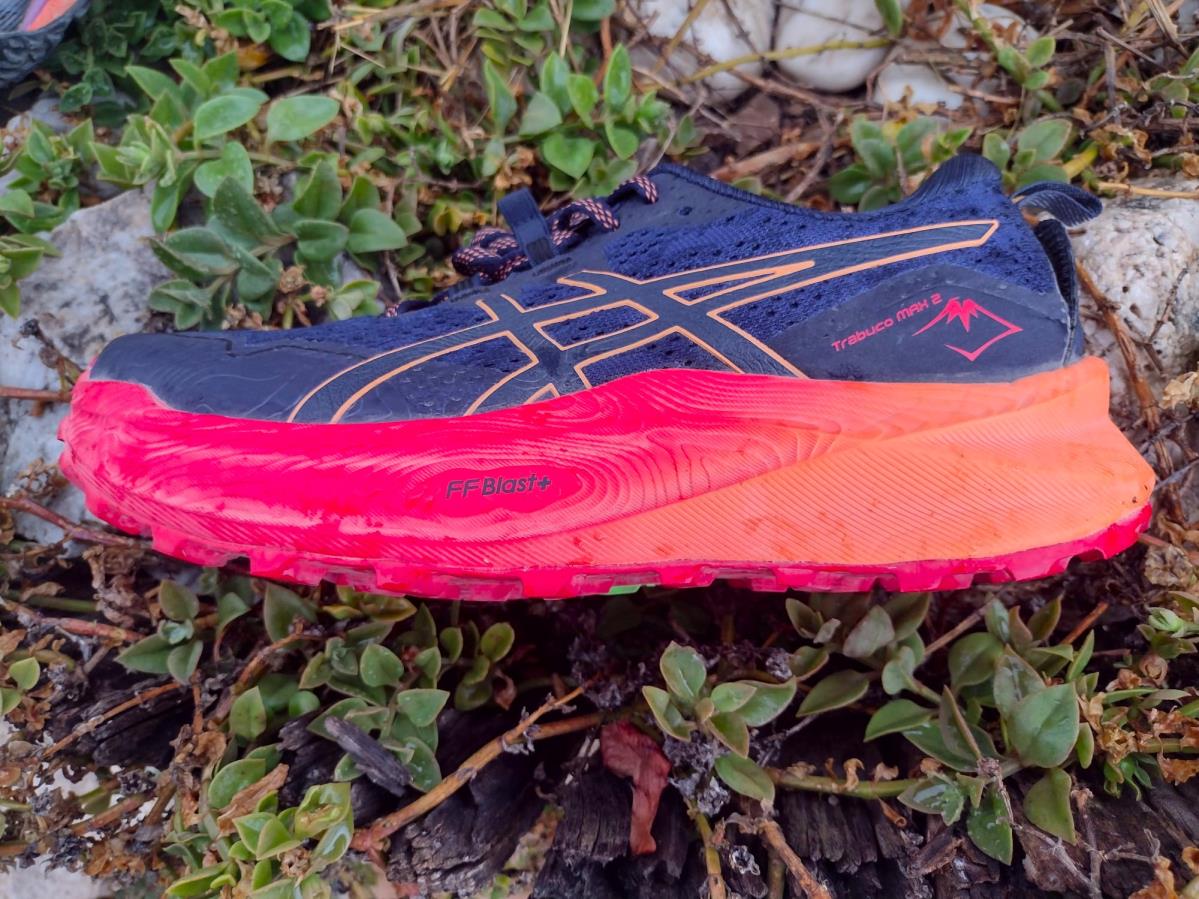
The ASICS Trabuco Max 2 foam from the side - it's high!
Get your FREE Guide to Running Speed and Technique
Top Features:
- Standard laces with elastic smart lace loop to keep them tamed when running
- Gaiter fittings for rain and snow
- Lots and lots of foam for cushioning and protection (FF BLAST™ PLUS Technology)
- GUIDESOLE™ technology with TPU plate reduces ankle flexion and provides a shock-absorbent landing zone to lessen fatigue of other leg muscles and increase runner efficiency.
- ASICSGRIP™ Technology, ASICS proprietary outsole rubber provides high grip on various terrain, without compromising durability. Gives you increased confidence downhill!
- They look incredibly good for a trail running shoe with the prominent foam stack. Plus, they have reflective details which helps improve visibility during low-light conditions.
- Stack Height: Heel: 43mm (7mm more than Trabuco v1), Forefoot: 38mm. Drop: 5mm (same as Trabuco v1)
- Weight: 265 g/9.3 oz (versus 235g/8.3 oz of the original Trabuco)
- Price: £116 Amazon
Conclusion
ASICS have manged to take my favourite training running shoes and make it better. The Trabuco Max 2 which it’s increased stack height will give you enhanced protection and bounce on the trails. The soles are super “sticky” and will keep you sure footed even on the steepest downhills. I personally think the brightly coloured thick foam looks striking along with being practical.
If you are looking for a comfortable and practical trail running shoe designed for neutral or under-pronation running style, then these are for you.
Karen Parnell is a Level 3 British Triathlon and IRONMAN Certified Coach, 8020 Endurance Certified Coach, WOWSA Level 3 open water swimming coach and NASM Personal Trainer and Sports Technology Writer.
Karen is currently studying for an MSc in Sports Performance Coaching at the University of Stirling.
Need a training plan? I have plans on TrainingPeaks and FinalSurge:
I also coach a very small number of athletes one to one for all triathlon and multi-sport distances, open water swimming events and running races, email me for details and availability. Karen.parnell@chilitri.com
Get your FREE Guide to Running Speed and Technique
Get your FREE Swim Workouts for Triathletes E-book
Get your FREE Open Water Swimming Sessions E-Book
Get you FREE 31 Structured Indoor Cycling Sessions and Training Plan
Trail Running Shoe FAQ
1. What is a trail running shoe?
A trail running shoe is specifically designed for off-road running on uneven and unpredictable terrain. It offers features that provide stability, traction, and protection against rocks, roots, and other natural obstacles.
2. Why do I need a specialized shoe for trail running?
Trail running shoes are designed to provide better grip, support, and protection compared to regular running shoes. They are essential for safety and performance on rugged and challenging trails.
3. What are the key features to look for in a trail running shoe?
- Traction: Deep lugs and an aggressive outsole provide better grip on slippery or uneven surfaces.
- Protection: Features like rock plates or reinforced toe caps shield your feet from sharp objects on the trail.
- Stability: A secure fit and supportive midsole prevent ankle rolls and provide stability on uneven terrain.
- Comfort: Cushioning, a well-padded collar, and a snug fit enhance overall comfort during long runs.
- Breathability: Ventilation keeps your feet cool and reduces the risk of blisters or discomfort.
- Water Resistance: Some shoes have water-resistant or waterproof materials to keep your feet dry in wet conditions.
4. Should I consider the type of terrain I'll be running on?
Absolutely. Different terrains demand different features. For example, if you'll be running on rocky trails, a shoe with a durable rock plate and reinforced toe cap is crucial.
5. How do I determine the right fit for a trail running shoe?
- Visit a specialized running store for a fitting. They can analyse your gait and suggest suitable options.
- Ensure there's enough space in the toe box to prevent toenail issues on descents.
- Your heel should be snug but not overly tight to avoid blisters or chafing.
6. Are there different types of trail running shoes?
Yes, there are three main types:
- Light Trail Shoes: Suited for well-groomed trails and are typically more flexible and lightweight.
- Rugged Trail Shoes: Built for more technical terrain, offering enhanced protection and stability.
- Off-Trail Shoes: Designed for extreme conditions, including mud, snow, or scree.
7. Is there a difference between men's and women's trail running shoes?
Yes, typically women's shoes are designed with a narrower heel and a wider forefoot to accommodate the anatomical differences between men and women.
8. How do I know when it's time to replace my trail running shoes?
Pay attention to signs of wear and tear, such as worn-out treads, reduced cushioning, or visible damage to the upper. On average, trail running shoes last about 300-500 miles.
9. What's the importance of trying on the shoes before purchasing?
Trying on shoes allows you to assess the fit, comfort, and overall feel. It also provides an opportunity to test the traction and support, ensuring they meet your specific needs.
10. Can I use trail running shoes for other activities?
While they're designed primarily for trail running, some people find them comfortable for hiking or other outdoor activities. However, they may not be suitable for sports with specific shoe requirements.
Choosing the right trail running shoe is a personal decision, and what works best for one person may not work for another. Take your time to try on different options and consider seeking advice from experienced runners or specialty stores.
